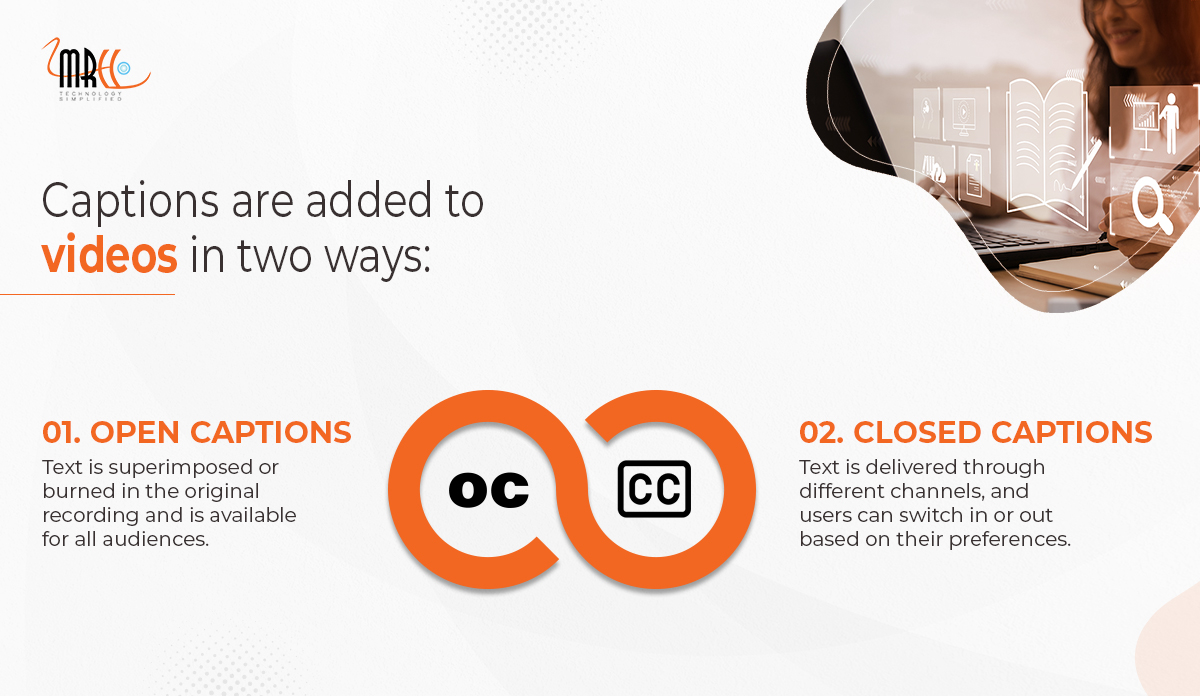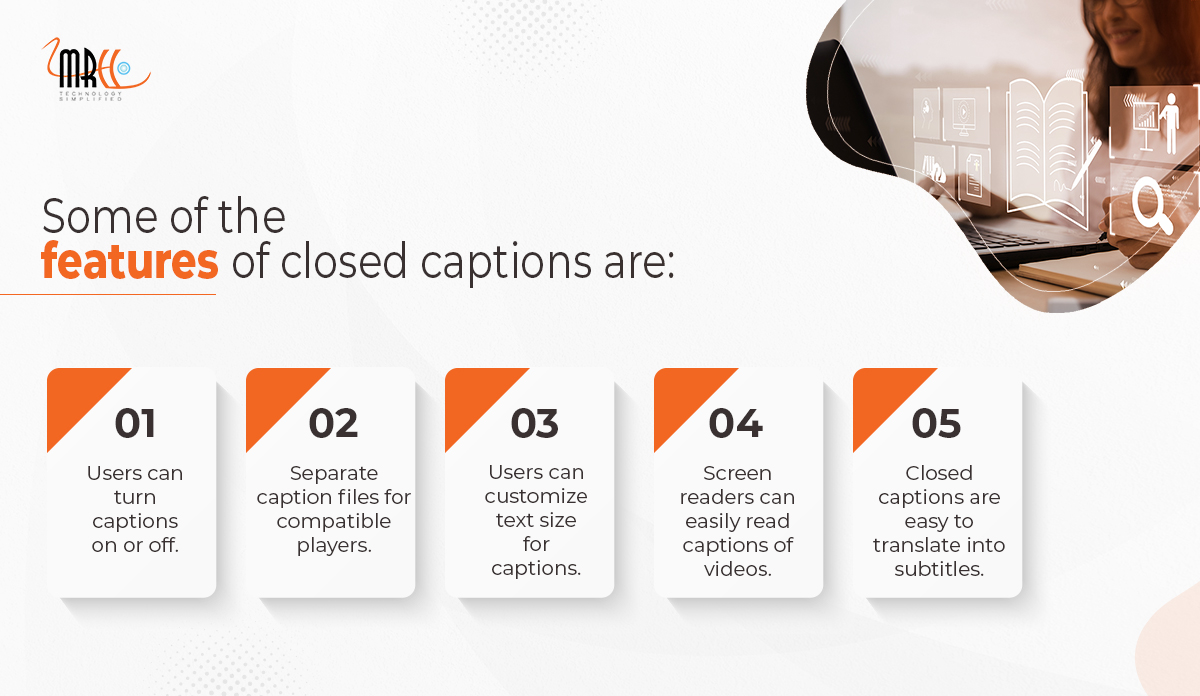Nov 6 2023
Demystifying Closed Captioning: Guidelines and Best Practices

VP Content & Delivery Solutions

Nov 6 2023

VP Content & Delivery Solutions

The primary purpose of videos in higher education is to increase student engagement and knowledge retention. In the online environment, almost 100% of the courses include video content. However, how much of the videos actually deliver value for all students, regardless of their disabilities? The reality is that videos without captions are not accessible to everyone. Interestingly, captions and subtitles are not just preferred by students with hearing problems. A study by 3PlayMedia showed that 98.6% of students prefer videos with captions. So what can you do to boost student engagement in your learning videos? Include closed captioning!
Captioning provides an alternative representation of the audio in the language of the listener. It includes speech and a description of the sound effects and music used in the video. Subtitles and captions are often used interchangeably. However, captions are added to the video with the assumption that the listener cannot hear the audio and needs a textual alternative to speech and sound. Subtitles, on the other hand, are added, presuming that the listener can hear the audio but doesn’t understand the original language used in the video.

The caption added to the video must be a verbatim version where each word uttered in the audio is displayed in text form so the audience can follow along. The caption must synchronize with the audio used in the video content.
Captions enable the accessibility of visual content by screen readers because students who use screen readers spend 211% more time interacting with data visualizations. Some of the benefits of captioning are:
Open captions are burned into the video file, and they are always visible when videos are played. Users can’t turn them on or off. However, open captions result in accessibility challenges such as:
Closed captioning addresses all the above accessibility options.

The Web Content Accessibility Guidelines (WCAG) are a set of best practices for web accessibility. The latest guideline is WCAG 2.0. There are 3 compliance levels: A, AA, and AAA. Level A is the easiest to achieve, while AAA is the hardest. The web accessibility laws require you to create video content compliant with level A or AA.
Creating high-quality captions for education publishers requires skills to identify the right speech and non-speech audio information to include in the captions to meet WCAG guidelines. MRCC has the software, people, skills, and experience to create closed captioning with the highest accuracy. Some of the ways MRCC can help in creating closed captioning are:
Captions are an accessible requirement for students who are deaf or hard of hearing to follow along with the video content. People with learning and cognitive disabilities can better understand the content when captions are included. Students who want to enforce focus also use captions while watching videos. As online educational material can be accessed anywhere at any time, captions allow students to quietly watch videos in loud or silent environments with captions enabled. Captioning also improves retention, comprehension, and engagement for all types of users. Furthermore, captioning can be creative to include humor, commentary, or subtitles to videos.
Leave A Reply
Your email address will not be published. Required fields are marked *